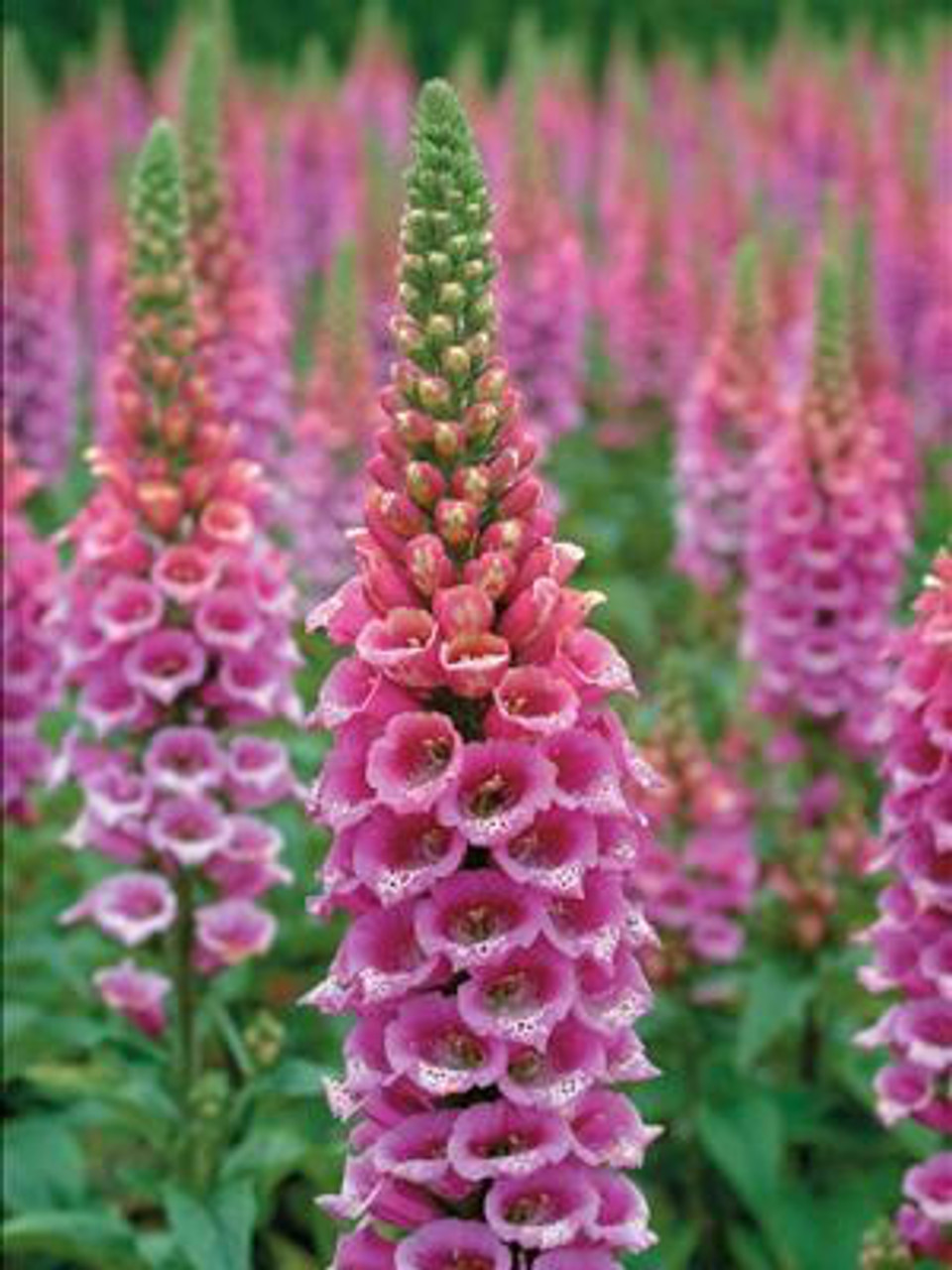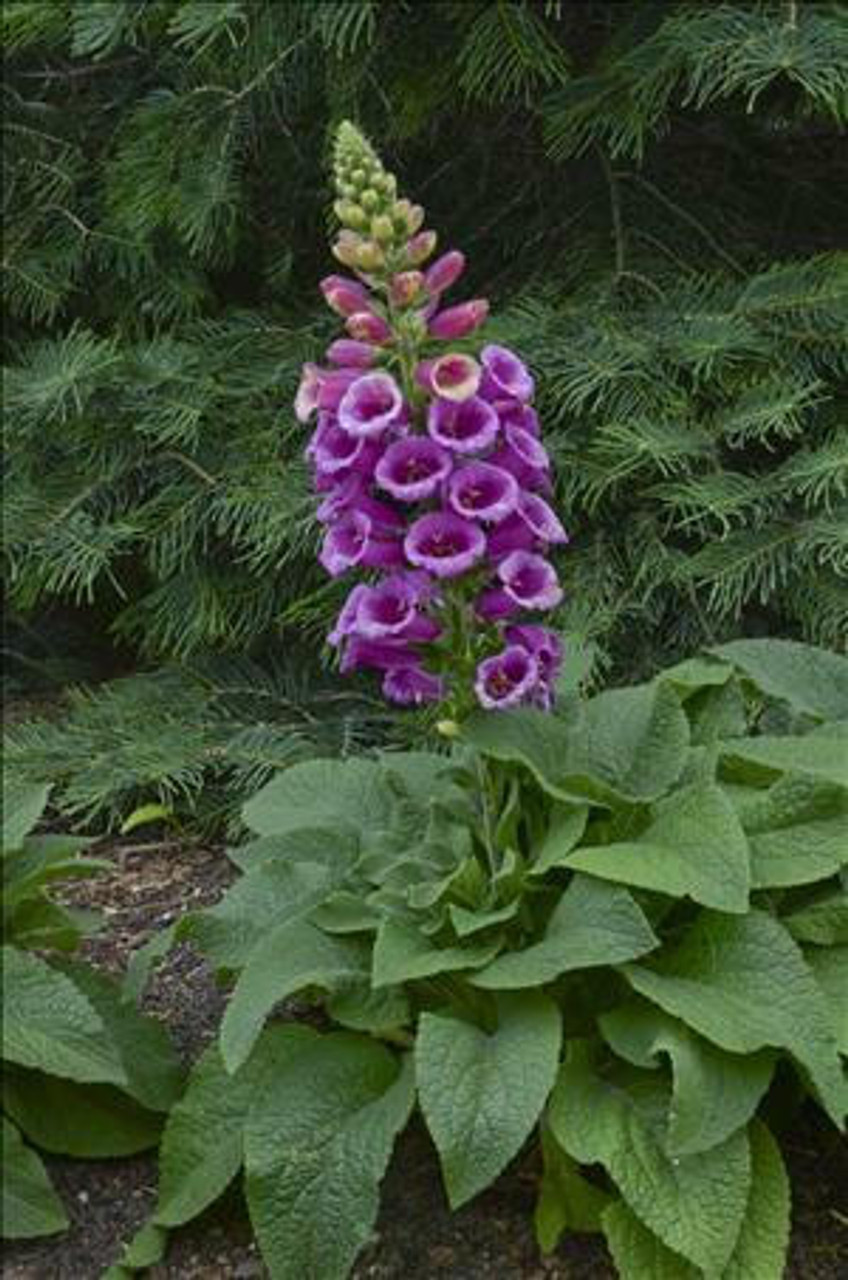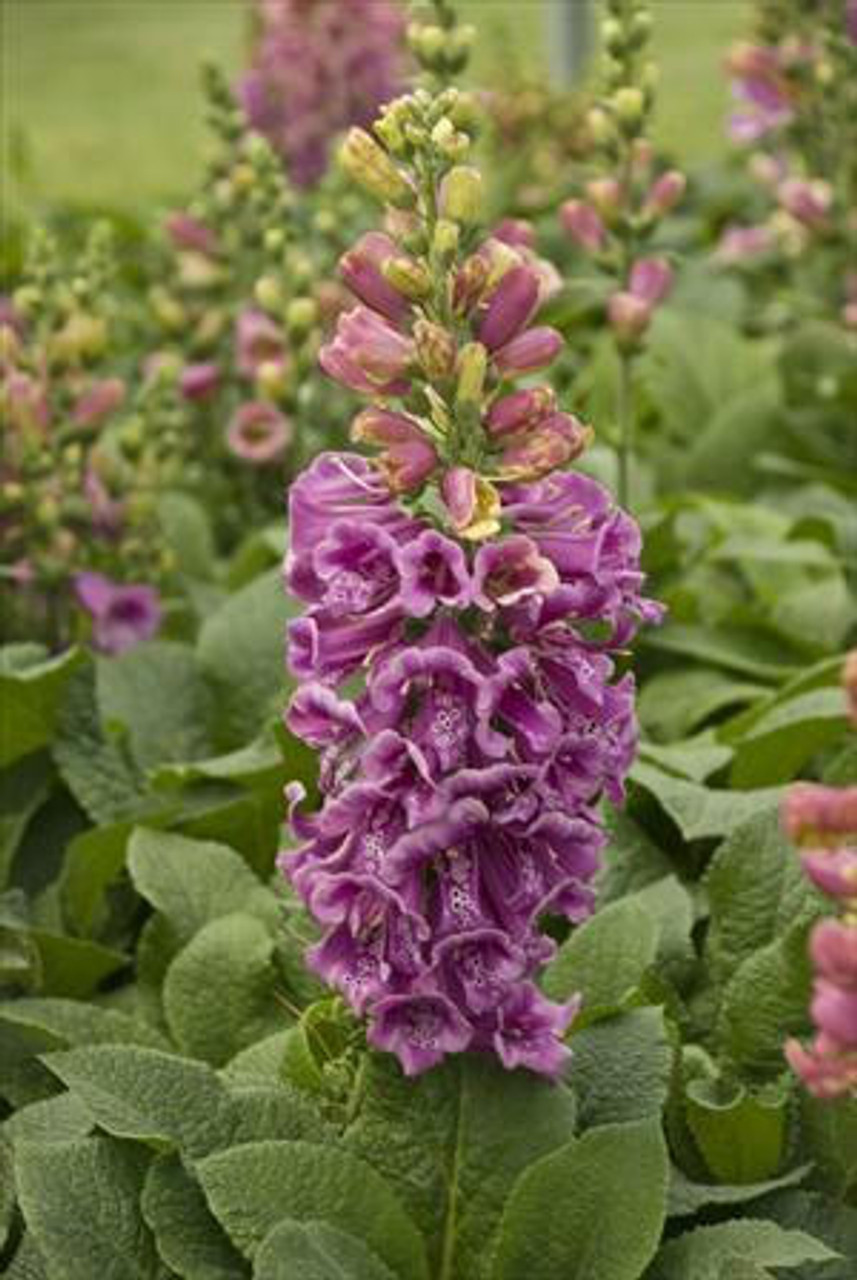Product Description
Digitalis p. 'Candy Mountain' (4) 1-gallons
Foxglove
Height: 3-4 Feet, Spread: 1-2 Feet
Flower Color: Pink and Purple-red Shades, Foliage Color: Green shades
Hardiness Zone: 4 - 9
Full sun - Part shade
Blooms Early summer
- 'Candy Mountain' is the first foxglove ever to have upward-facing flowers instead of the usual downward-facing ones. With this new angle, viewers can easily see the beautifully speckled throats of these rose pink blossoms. They are produced on very strong, strictly upright stems in early summer. This variety is a biennial.
- Digitalis forms large rosettes of downy, green, oblong leaves from which numerous flower spikes emerge. It looks especially nice when planted along fences, at the wood's edge, or in large containers. Attracts hummingbirds. Deer and Rabbit resistant.
Digitalis purpurea 'Candy Mountain' is a unique and eye-catching foxglove cultivar that stands out for its upward-facing flowers, a trait rarely seen in foxgloves. It is a wonderful choice for adding vertical interest and attracting pollinators to gardens. Here is a closer look at what makes it special:
Appearance:
- Flowers: Unlike most foxgloves that have pendulous flowers, 'Candy Mountain' features upward-facing, bell-shaped flowers, allowing you to fully appreciate their beauty. The flowers are a lovely rose-pink color with speckled throats and bloom profusely in early summer. The flower spires can reach 3-4 feet tall, creating a dramatic vertical accent in the garden.
- Foliage: The plant forms a basal rosette of large, deep green, oval leaves that have a slightly fuzzy texture.
Growing Conditions:
- Light: Thrives in full sun to partial shade. It can tolerate some shade, but it will flower best with at least 4-6 hours of direct sunlight per day.
- Soil: Prefers moist, well-drained soil that is rich in organic matter. It is not too fussy about soil pH but does best in slightly acidic conditions.
- Hardiness Zones: Hardy in USDA zones 4-9, making it suitable for a wide range of climates.
Uses:
- Borders and Beds: Its tall flower spires add vertical interest and a touch of drama to borders, beds, and cottage gardens.
- Woodland Gardens: It is also a great choice for woodland gardens, where it can naturalize and create a beautiful, informal look.
- Containers: 'Candy Mountain' can be grown in containers, but it is important to choose a large pot to accommodate its size.
- Cut Flowers: The flowers make excellent cut flowers for fresh arrangements.
- Pollinator Gardens: It is a great choice for pollinator gardens, attracting bees, butterflies, and especially hummingbirds with its abundant nectar.
Additional Benefits:
- Upward-Facing Flowers: The unique upward-facing flowers make it stand out from other foxglove varieties.
- Strong Stems: The flower spires are held on strong, upright stems that do not require staking.
- Self-Sowing: It often self-sows, creating new plants for future seasons.
- Deer and Rabbit Resistant: The foliage is generally unappealing to deer and rabbits.
Things to Consider:
- Biennial or Short-Lived Perennial: While 'Candy Mountain' is often listed as a perennial, it can be short-lived and may behave more like a biennial. This means it may not come back reliably year after year, but it often self-sows to create new plants.
- Toxicity: All parts of the foxglove plant are toxic if ingested, so it is important to keep it away from children and pets.
Overall, Digitalis purpurea 'Candy Mountain' is a unique and beautiful foxglove cultivar that is perfect for adding vertical interest and attracting pollinators to any garden. Its upward-facing flowers, strong stems, and adaptability make it a popular choice for gardeners of all levels.
(4) 1-gallon containers ready to plant, plants may be trimmed for shipping,
Other Details
The most important part of the plant is its root system. Healthy roots are the foundation of a healthy, vibrant plant. The type of plug container used is based on the specific needs of the plants. Perennials offered as bare root traditionally perform better when planted as bare root.Planted in a specialized mix, potted plants have well established root systems. Top growth stage will vary depending on the current life cycle and time of year when shipped. In Winter and early Spring dormant plants may be shipped. Dormant plants may be planted right away, even before the last frost date.
Most bare root varieties are field grown for at least one season, though Hemerocallis and Hosta are grown for two seasons. The bulk of the soil is removed during the harvesting process and the tops of most varieties are trimmed back to the crown. They are graded, packed in shredded aspen or sphagnum moss and stored in freezers until ready to be shipped.
See our Container Sizes and Bare Root Perennials pages for more information.
Plant information and care is provided in the Overview section, Plant Genus Page and general information is provided in the Planting Care & Guides. Additional questions can be asked on each Plant page.
Plant Spacing: Using the maximum mature spread or width of a plant to guide spacing, ensures space to grow to full size. To fill an area sooner, plant them closer together. Just remember, future thinning or transplanting may be needed.
Water: Keep a close eye on newly planted perennials, especially throughout the first growing year. Most early plant loss is due to too much or too little water!










